I have a CRUD app deals with two objects, Cards and Logs. When a user creates, edits, or deletes a card, a new Log record is created in the Log table of the database. When the user creates a card, the Log record's NewCard value is JSON data and the OldCard value is null. When the user deletes a card, the Log record's OldCard value is JSON data and the NewCard is null.
However, whenever I delete a card, Entity Framework always creates this extra record circled in red:
Record 2101 is the result after CreateNewLog(card, null) in IActionResult Create. Record 2102 and 2103 are the result after CreateNewLog(null, oldCard) in IActionResult Delete. Record 2103 is the problem. How do I stop this record from being created?
CardController.cs
private ICardData _cardData;
private ILogData _logData;
public CardController(ICardData cardData, ILogData logData)
{
_cardData = cardData;
_logData = logData;
}
// POST api/card
[HttpPost]
public IActionResult Create([FromBody] Card card)
{
try
{
if (ModelState.IsValid)
{
_cardData.Add(card);
CreateNewLog(card, null);
Response.StatusCode = (int)HttpStatusCode.Created;
return Json(new { Data = card });
}
}
catch (Exception ex)
{
Response.StatusCode = (int)HttpStatusCode.BadRequest;
return Json(new { Message = ex.Message });
}
return Json("Failed");
}
// DELETE api/card/1
[HttpDelete("{id}")]
public void Delete(int id)
{
Card oldCard = _cardData.Get(id).ShallowCopy();
CreateNewLog(null, oldCard);
_cardData.Delete(id);
}
public void CreateNewLog(Card newCard, Card oldCard)
{
Log newLog = new Log()
{
DateChanged = DateTime.Now,
CardId = newCard == null ? oldCard.CardId : newCard.CardId,
OldCard = JsonConvert.SerializeObject(oldCard),
NewCard = JsonConvert.SerializeObject(newCard),
User = "John Smith"
};
_logData.Add(newLog);
}
LogData.cs
public class SqlLogData : ILogData
{
private LitmusDbContext _context;
public SqlLogData(LitmusDbContext context)
{
_context = context;
}
public IEnumerable<Log> GetAll()
{
return _context.Logs.ToList();
}
public Log Get(int id)
{
return _context.Logs.FirstOrDefault(c => c.Id == id);
}
public void Add(Log newLog)
{
_context.Add(newLog);
_context.SaveChanges();
}
}
CardData.cs
public class SqlCardData : ICardData
{
private LitmusDbContext _context;
public SqlCardData(LitmusDbContext context)
{
_context = context;
}
public IEnumerable<Card> GetAll()
{
return _context.Cards.ToList();
}
public Card Get(int id)
{
Card card = _context.Cards.FirstOrDefault(c => c.Id == id);
return card;
}
public void Add(Card newCard)
{
_context.Add(newCard);
_context.SaveChanges();
}
public int Commit()
{
_context.SaveChanges();
return 0;
}
public void Update(Card newCard)
{
var oldCard = Get(newCard.Id);
if (oldCard != null)
{
oldCard.CardId = newCard.CardId;
oldCard.State = newCard.State;
_context.SaveChanges();
}
}
public void Delete(int id)
{
var cardToDelete = Get(id);
_context.Remove(cardToDelete);
_context.SaveChanges();
}
}
